This project is to upgrade approximately 6.4 miles of the existing Sunnyvale East Channel to provide 1% flood protection (100-year event) to 1,618 parcels and approximately three (3) miles of the existing West Channel to provide 1% flood protection for 47 acres of highly valuable industrial lands, including the Onizuka Air Force Base.
The Sunnyvale East Channel and Sunnyvale West Channel improvement projects have been combined into a single flood protection project with a single Environmental Impact Report (EIR) to reduce construction costs and improve efficiencies. Both projects decrease channel turbidity and sediment by repairing erosion sites, thereby improving water quality and reducing sediment to the San Francisco Bay.
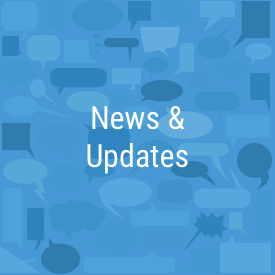
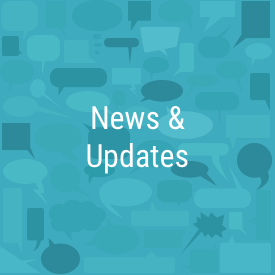
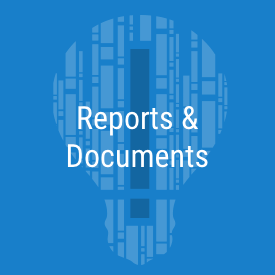
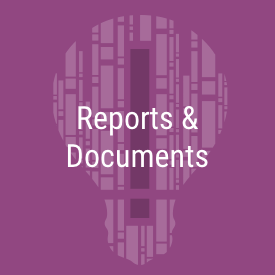
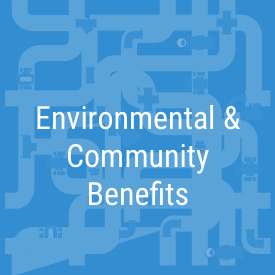
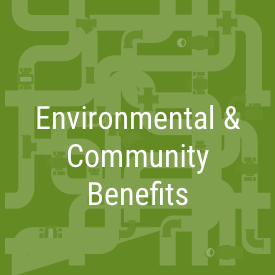


On April 9, 2024, the Valley Water Board of Directors (Board) held a formal public hearing approving changes to projects under the Safe, Clean Water Program that will result in additional funding being allocated to the Sunnyvale East and West Channels Project. With this additional funding, Valley Water can construct both phases of the project without delay.
In FY23, Valley Water completed the 90% design documents. 100% design drawings are anticipated to be complete by the end of FY25 (June 2025). Design documents will be final once the City of Sunnyvale and resource agency permits are incorporated.
Valley Water submitted all the required permit applications to various state and federal regulatory agencies in June 2017. However, because portions of the project have been refined following a partnership with Google Inc., and five (5) years have transpired since permit applications were initially submitted, Valley Water resubmitted the regulatory permit applications in August 2023. Valley Water has since received comments and requests for additional information. Subsequently, Valley Water has decided to update the permit applications and resubmit to address comments and provide additional information. Resource Agencies requested the Project site delineation maps be updated. Updated permit applications are anticipated to be submitted in fall 2024. As a result, Valley Water hopes to receive the regulatory permits by mid-FY25. Upon receipt of the required permits, the project will be advertised for construction, which is expected to begin late-2025 (FY26), with anticipated completion by the end of 2027 (FY28). The project fact sheet is available.
Partnerships and collaborations
On February 22, 2022, the Valley Water Board approved an agreement with Google for a design change along approximately 1,100 linear feet of the Sunnyvale West Channel as part of its proposed site development for the Google Caribbean Campus Project. In 2018, Valley Water entered a Memorandum of Understanding with Google to share costs associated with integrating flood conveyance improvements on the West Channel with Google’s campus development project. The Google project will create onsite and in-kind mitigation opportunities by constructing a wider channel with larger and taller setback levees without floodwalls. It will enhance public access and provide Valley Water the opportunity to utilize excess onsite and in-kind mitigation created by the Google project to offset some impacts from the Valley Water project. Valley Water has agreed to contribute $2.6 million towards the Google project. The amount represents estimated costs for incorporating the flood protection improvements designed by Valley Water within the Google project limits that Valley Water will no longer need to construct.
In addition to coordinating with Google on the West Sunnyvale Channel, Valley Water continues to collaborate with the City of Sunnyvale Water Pollution Control Plant (WPCP) on a perimeter wall around the city's facility at the downstream end of the Sunnyvale West Channel. Valley Water and the WPCP are finalizing the design of the wall to serve both as a flood protection barrier and a secure perimeter wall for the WPCP. Construction of the city's WPCP perimeter wall is scheduled to begin in summer 2024.
In February 2022, the Board approved the CEQA addendum, which addresses project changes resulting from the Google Caribbean Campus Project and the Valley Water–City of Sunnyvale Wastewater Pollution Control Plant joint, shared wall project.
In December 2020, an amendment to a cost-sharing agreement between Valley Water and the City of Sunnyvale to construct recreational trails was finalized, extending an original 2016 cost-sharing agreement to December 2025.
October 2024
Project Fact Sheets
Environmental Impact Report (EIR)
Valley Water has prepared a Draft Environmental Impact Report and a Final Environmental Impact Report to evaluate environmental impacts of the proposed flood protection project. Below is a summary of the environmental reports and documents.
Final Environmental Impact Report
The Final EIR responds to public comment received on the Draft EIR during the public review period, as well as reflects changes to the Draft EIR made to address comments received during public circulation. The Final EIR was certified on September 9, 2014 by the District's Board of Directors.
Response Letters
- San Francisco Bay Regional Water Quality Control Board Response to Permit Application
- San Francisco Bay Regional Water Quality Control Board Supplemental Information
Draft Environmental Impact Report
The Draft EIR identified potentially significant environmental impacts associated with aesthetics, air quality, biological resources, cultural resources, geology/soils, greenhouse gas emissions, hazardous materials, hydrology/water resources, noise and vibration, land use, public utilities, recreation, and traffic. The majority of impacts were determined to be less than significant after the implementation of mitigation measures proposed. Construction impacts related to violation of applicable air quality and noise/vibration standards were determined to be significant and unavoidable even after implementation of air quality and vibration mitigation measures.
The Draft EIR was published and circulated between November 1, 2013 and December 15, 2013. The public review period was extended to February 21, 2014 to accommodate additional review time by the public agencies.
- Draft Environmental Impact Report (October 2013)
- Appendix A - Notice of Preparation
- Appendix B - Planning Study Report
- Appendix C - Stream Maintenance Program Update
- Appendix D - Mitigation Monitoring and Reporting Program
- Appendix E - Cultural Resources Technical Report
- Appendix F - Candidate Key Observation Point Locations
- Appendix G - Air Quality and Greenhouse Gas Emissions Calculations
- Appendix H - Geotechnical Studies
- Appendix I - 2007 Hazardous Materials Report
- Appendix J - Construction Noise Calculations
- Appendix K-1 - Traffic Construction Trip Calculations
- Appendix K-2 - Traffic LOS Analysis for Caribbean Bridge Replacement
- Appendix L - Special-Status Plant Species Considered but Rejected for Occurrence in the Project Area
- Appendix M - Detailed Descriptions of Special-Status and Locally Significant Plant Species Potentially Occurring in the Project Area
- Appendix N - Detailed Descriptions of Special-Status Wildlife Species Potentially Occurring in the Project Area
- Appendix O - Preliminary Delineation of Wetlands and Other Waters
- Appendix P - Chapter 3.3 Biological Resources Figures: Soil Maps, West Channel Habitat Impacts Maps, East Channel Habitat Impacts Maps
FY22-36 Key Performance Indicator for the Safe, Clean Water Program
-
Provide 1% (100-year) flood protection for 1,618 properties and 47 acres (11 parcels) of industrial land, while improving stream water quality and working with other agencies to incorporate recreational opportunities.
Benefits
-
Provides 1% flood capacity for approximately 6.4 miles of channel along Sunnyvale East and approximately three (3) miles of channel along Sunnyvale West within the City of Sunnyvale, protecting 1,618 properties (Sunnyvale East) and 47 acres (11 properties) of industrial land (Sunnyvale West)
-
Improves channel water quality by providing erosion control measures to decrease sediment and turbidity
-
Identifies recreational opportunities that can be integrated by the City of Sunnyvale and others as appropriate
-
Addresses climate change as the project is designed to increase flow capacity, thereby reducing flood risks from storm events projected to become more frequent and intense due to climate change. Furthermore, the project accounts for 2 feet of sea level rise
Geographic Area of Benefit
Sunnyvale
Flooding History
Valley Water constructed the Sunnyvale East and West Channels in the 1960s and 1970s to alleviate the storm drain systems of Sunnyvale and Cupertino during a 10-year storm by directing the overflow through the channels to San Francisco Bay. Since the construction of the channels, the project area has experienced flooding during major storm events in 1963, 1968, 1983, 1986, and 1998.
Project Background
The Sunnyvale East and West Channels were initially separate projects under the voter-approved Clean, Safe Creeks and Natural Flood Protection Plan (CSC Plan) that came into effect in Fiscal Year 2001-2002 (FY02). To improve efficiency, the two projects were combined into a single effort.
Valley Water completed the Planning Study Report, Internal Draft Environmental Impact Report, and 60% Design.
Voters Approve 2012 Safe, Clean Water Program
In November 2012, voters approved the Safe, Clean Water and Natural Flood Protection Program (2012 Program), which replaced the CSC Plan. The project was included in the 2012 Program with the objective of providing 100-year flood protection for approximately 1,618 properties and 47 acres of industrial land while improving water quality and recreational opportunities.
Under the 2012 Program, Valley Water completed the 100% design and, in FY17, submitted permit applications to various regulatory agencies.
However, in April 2018, Valley Water entered a partnership with Google, which has properties on both sides of a segment of the Sunnyvale West Channel upstream of Caribbean Drive, resulting in proposed design changes in a segment of the Sunnyvale West Channel. Google's project aimed to create wider channels with larger setback levees without floodwalls, enhancing public access and creating onsite and in-kind mitigation opportunities that regulatory agencies prefer.
The project schedule was pushed back due to incorporating potential design changes resulting from the Google partnership and ongoing negotiations with regulatory agencies.
Voters Approve the Renewed Safe, Clean Water Program
In November 2020, voters approved the renewed Safe, Clean Water and Natural Flood Protection Program (Safe, Clean Water Program), replacing the 2012 Program. The project has continued in the renewed Safe, Clean Water Program.
About the Safe, Clean Water and Natural Flood Protection Program
In November 2020, voters in Santa Clara County overwhelmingly approved Measure S, a renewal of Valley Water’s Safe, Clean Water and Natural Flood Protection Program.
The program was first passed by voters in 2000 as the Clean, Safe Creeks and Natural Flood Protection Plan, then again in 2012 as the Safe, Clean Water and Natural Flood Protection Program. The renewal of the Safe, Clean Water Program will continue to provide approximately $47 million annually for local projects that deliver safe, clean water, natural flood protection, and environmental stewardship to all the communities we serve in Santa Clara County.
While evaluating ways to improve the 2012 program, Valley Water gathered feedback from more than 21,000 community members. That helped Valley Water create the six priorities for the renewed Safe, Clean Water Program, which are:
Priority A: Ensure a Safe, Reliable Water Supply
Priority B: Reduce Toxins, Hazards and Contaminants in our Waterways
Priority C: Protect our Water Supply and Dams from Earthquakes and Other Natural Disasters
Priority D: Restore Wildlife Habitat and Provide Open Space
Priority E: Provide Flood Protection to Homes, Businesses, Schools, Streets and Highways
Priority F: Support Public Health and Public Safety for Our Community
Each year, Valley Water prepares a report providing a progress update for each of these program priorities, along with fiscal year accomplishments.
To ensure transparency and accountability to the voters, the ballot measure also created an Independent Monitoring Committee, appointed by the Santa Clara Valley Water District Board of Directors. The Independent Monitoring Committee annually reviews the program’s progress to ensure the outcomes are achieved in a cost-efficient manner and reports its findings to the Board. Additionally, the IMC also reviews each proposed 5-year implementation plan prior to its submittal for Board approval.
In addition, the program requires three independent audits.


